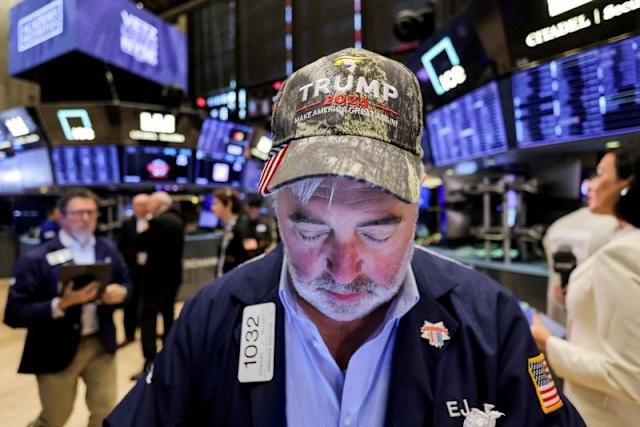The U.S. stock market is riding a rollercoaster of nerves as investors wrestle with President Donald Trump’s trade brinkmanship and mounting fears of an economic stumble. Monday’s brutal sell-off saw the S&P 500 skid 2.7%—shedding 156 points to 5,716—flirting with a 9% drop from its February peak. Experts say it’s a cocktail of tariff turmoil, geopolitical jitters, and shrinking economic signals that’s spooking Wall Street.
Financial analyst Jon Erlichman, pinned the plunge on a “roadmap brewing for months.” Early Trump optimism—fueled by his pro-business swagger—has curdled as his tariff obsession overshadows short-term market wins. “Investors cheered his agenda last fall, but now it’s all about the long game, and tariffs are rattling cages,” Erlichman said. Canada’s retaliation, like Ontario’s now-paused 25% electricity export surcharge, has only fanned the flames.
Mark Sebastian, founder of Option Pit and CIO at Karman Line Capital, called Monday’s rout “top-heavy”. “It kicked off with Apple, then spread like wildfire to Nvidia, Amazon, and the financials—big names that soared post-election got clipped hard,” he said. The Nasdaq, tech’s turf, cratered 4%, underscoring the sector’s pain.
Meanwhile, spooked investors are piling into U.S. Treasury bonds, betting they’ll hold steady if the economy buckles. Yields are dipping as bond prices climb—a classic flight-to-safety move. “Some players see Apple as a safer haven than Treasuries after bond volatility spiked over the last six months,” Sebastian noted, a twist on traditional refuge plays.
Trump’s Sunday Fox News dodge on recession fears—“I hate to predict that; we’re in a transition”—didn’t calm nerves. Add Delta Airlines slashing its outlook over sluggish travel demand, and the picture darkens. The Atlanta Fed’s real-time GDP tracker hints the U.S. economy might already be contracting, a red flag for Erlichman. “Wealth’s tied to stocks—when they wobble, people rethink trips to the U.S.,” he said.
Globally, the vibe’s shifting too. “Europe’s outpacing U.S. stocks this year, with capital flowing away amid geopolitical jitters,” Erlichman added, pointing to the MSCI EAFE Index’s 8% year-to-date gain through March 4. Canada’s TSX took a 400-point hit Monday, clawing back from a 500-point dive, as tariff tit-for-tat stings.
Trump’s trade war—25% tariffs on Canadian steel and aluminum locked in Tuesday, down from a threatened 50%—keeps markets guessing. Ontario Premier Doug Ford’s pause on the electricity surcharge earned a rare Trump nod (“I respect that”), but experts like Erlichman see no quick fix. “Corrections happen, but this tariff uncertainty? It’s a beast of its own,” he said. Sebastian’s cautiously hopeful: “A rally could spark if Trump’s tech CEO huddle Monday bears fruit, but I’m not betting the farm yet.”
The S&P’s year-long climb—from 523.07 in March 2024 to 555.92 now—still nets a 6% gain, but 2025’s off to a rocky start, down 1.2% year-to-date. “It could still be a positive year,” Erlichman mused, “but it’s all on Trump’s economic endgame.” For now, Wall Street’s holding its breath—and its bonds.

